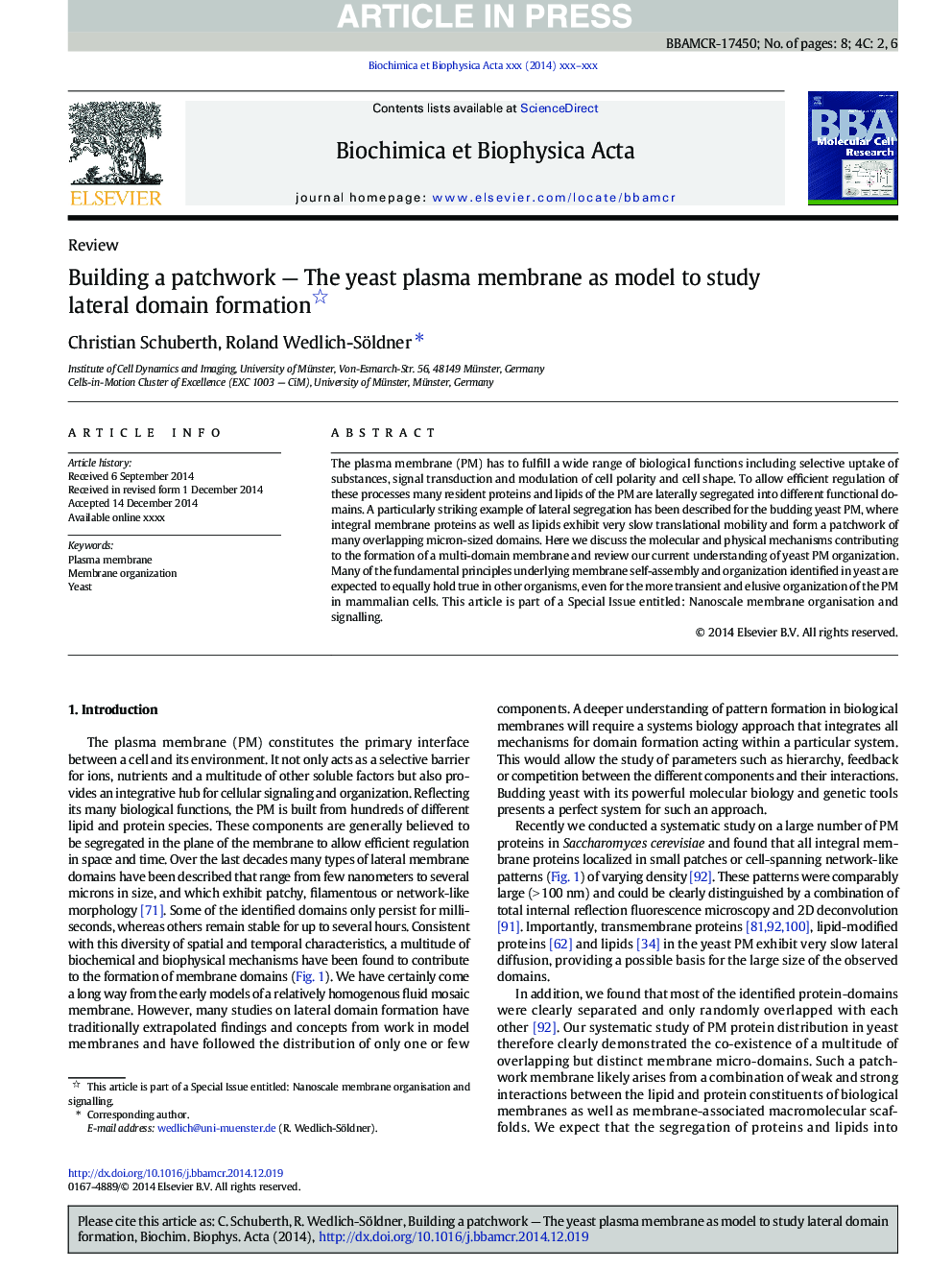| Article ID | Journal | Published Year | Pages | File Type |
|---|---|---|---|---|
| 10801908 | Biochimica et Biophysica Acta (BBA) - Molecular Cell Research | 2015 | 8 Pages |
Abstract
The plasma membrane (PM) has to fulfill a wide range of biological functions including selective uptake of substances, signal transduction and modulation of cell polarity and cell shape. To allow efficient regulation of these processes many resident proteins and lipids of the PM are laterally segregated into different functional domains. A particularly striking example of lateral segregation has been described for the budding yeast PM, where integral membrane proteins as well as lipids exhibit very slow translational mobility and form a patchwork of many overlapping micron-sized domains. Here we discuss the molecular and physical mechanisms contributing to the formation of a multi-domain membrane and review our current understanding of yeast PM organization. Many of the fundamental principles underlying membrane self-assembly and organization identified in yeast are expected to equally hold true in other organisms, even for the more transient and elusive organization of the PM in mammalian cells. This article is part of a Special Issue entitled: Nanoscale membrane organisation and signalling.
Related Topics
Life Sciences
Biochemistry, Genetics and Molecular Biology
Biochemistry
Authors
Christian Schuberth, Roland Wedlich-Söldner,
